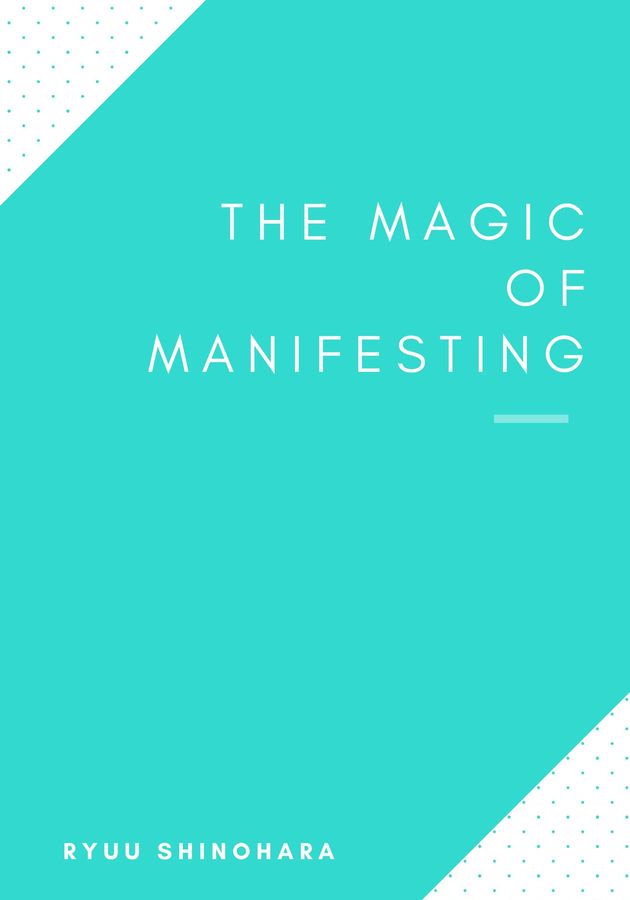If you’ve ever felt held back by your thoughts or emotions, or you’ve been too fearful to pursue your dreams, you might be suffering from emotional rigidity. This means being stuck in thought and emotional patterns that are not necessarily beneficial to you. So, to uncover your full potential, psychologist Susan David explores ways of becoming emotionally agile. Get ready to discover your inner world and start living a more fulfilling life.
Why do you need emotional agility?
Our emotions have evolved as guiding lights to our daily actions. The way we interpret gut feelings, complemented by our reaction to certain events, give us important hints at how to navigate through life. But sometimes emotions can mislead us because reactions such as fear often lead to distorted versions of reality. It is therefore important to learn to accept, deal and live with our emotions.
Emotional agility does just that, but also helps us to renew our thinking processes in order to free us from toxic behavioral patterns. Emotional rigidity, on the other hand, means being hooked by these toxic patterns which can lead to depression and anxiety as it makes us feel trapped and prevents us from reaching our goals.
Emotional agility, meaning flexibility in our thoughts and feelings, leads to well-being and success. It allows us to take control of our feelings, and, by extension, our lives. It opens up a space between stimulus and response that allows us to step back and adjust our reaction. Through emotional agility, you can tackle problems such as “negative self-image, heartbreak, physical pain, anxiety, depression, procrastination, tough transitions, and more,” says David. Emotional agility also allows us to deal with stress and endure setbacks while still keeping an open mind.
So, how do we become emotionally agile? The first step is to recognize and name our feelings as they arise.
Getting unhooked
Many of us are hooked on ways of doing things that don’t actually serve us well. The key to changing this is to learn to live with our emotions, both good and bad. Perhaps you struggle in dealing with negative emotions by pushing them away, or by getting completely absorbed in them, becoming unable to move on.
Pushing feelings away may give you temporary relief, but it will not help you in identifying and tackling the root of the problem. Furthermore, applying the “just-don’t-think-about-it” attitude won’t do you any good either. Studies have shown that if you tell someone not to think about white bears, they’re in fact more likely to think about them than they previously were.
You might also feel that forcing optimism is the way to go - but faking happiness is not beneficial in any way. A University of California study on smiling revealed that people can tell the difference between a fake smile and a genuine smile since they activate different muscle groups in the face. Not only that, further follow-up showed that those with genuine smiles had happier marriages and a greater sense of well-being overall.
This also shows that a general positive mindset has positive side benefits. Positivity can help one feel driven to achieve success and push through difficult setbacks. But you shouldn’t sideline your negative emotions. They are part of being human and therefore useful in many ways. Negative emotions encourage a more attentive, accommodating thinking style and makes people less gullible and more skeptical. These are good traits to have in some instances, when signing a contract, for example.
So, instead of pushing negative feelings away, we need to learn the technique of showing up. That is, the ability to face all our emotions with curiosity and kindness. This means developing self-compassion. Instead of falling into blaming ourselves, we should always try to be kind.
One way of doing this is by imagining the child you once were. Imagine your younger self being upset by something and coming to you for help. Would you tell this child that it was all their fault? Or would you hug and comfort the child in distress? Probably the latter. This is the mindset you should adopt with regards to your present self as well.
Stepping out
Once you have managed to look at and label your feelings, the next step towards emotional agility is stepping out. This means detaching yourself from your emotions and observing them for what they are: just thoughts. One way of doing this is by sitting down and writing about your emotional state. A study by Pennebaker showed that writing about mentally charged episodes led to increased levels of physical and mental well-being.
Try it for yourself: sit down and write for 20 minutes about your emotional experiences from the past week, month, or year. Approach these curiously, without judgement. After a couple of days, you can throw the papers away – or publish them, if you feel like it. Either way, the thoughts are now out on paper and you have started the process of stepping out and observing your emotional state from a distance.
Seeing the same thing from a different perspective broadens our view and offers possibilities of engaging with problems in a different, more productive way. Another way of distancing yourself from your emotional state is by repeating a self-deprecating view you have of yourself, over and over, until it loses its meaning and becomes just a string of words. This gives you space, and the choice to set this thought aside.
We can also achieve this kind of self-knowledge through mindfulness, through meditation and focusing on the breath. This will allow you to get the needed perspective on your thoughts – they are after all just thoughts: nothing more, nothing less.
Walking your why
What is it that truly motivates you? What are your goals, your core values? Techniques like stepping out allow you to take a step back from the emotional turmoil of your daily life. This perspective helps you discover what your goals in life are.
You can achieve this by writing a letter to your future self, for example. Research has shown that such continuity with yourself will actually reduce the likelihood of criminal offences being committed. That’s because such an exercise will make your distant self seem more real, rather than an abstract stranger. It prevents you from making bad choices and encourages good ones. Let’s face it: you’re less likely to squander all your money if you can envision the direct consequences to your future self.
Outlining your future self on paper will also reveal the goals that you want to achieve in life. To get there, you’ll have to decide what your core values are. Values are active and can help guide your actions. You can choose freely what it is that’s important to you.
Your guiding principles will help you make the right choices that will lead to the fulfillment of your goals. We all face multiple choice points every day, moments when we have to make minute decisions that will influence our future lives in some way or another. This will sometimes take courage, but if you stay true to your values in each decision, you are sure to live a happier life.
Many of us struggle to find a work-life balance, for example, and are eternally torn between being committed to our work and committed to our family. How about trying to frame the conflict differently? Instead of feeling you don’t spend enough time on either, focus on the quality you bring to each area of your life. You can say for example, “I value being a loving parent, I will bring that love to my interactions with my kids.” With regards to your workplace, you can focus on the productivity you bring to the office every day. Values are about quality, not quantity, after all.
Moving on
Once you have identified the guiding values in your life, it is time to put them into action. We often think this will mean making huge changes in our lives, but in fact making the tiniest changes to your behavior can have the biggest impacts.
A study analyzing the conversations between partners showed that an important factor of interacting with a partner involved trying to build an emotional connection with them. When a bid for emotional connection was made by one partner, the other usually responded in one of three ways: enthusiastic engagement, by ignoring the bid, or the partner would turn against the bid, by telling their partner they wanted to be left alone, for instance.
Following up on the couples six years later, only those who had been responding well to emotional bids were still married. Even though the tiny reactions seemed inconsequential at the time, they eventually had a massive effect on the relationship. It is the same with other behavioral patterns in our lives – tiny changes have a big impact!
Think of each change as frames in a movie. Individually, it doesn’t feel like they make a big difference, but if you put them all together you will end up with a completely different movie – a new life story.
Truly living by our values and working towards our goals will often mean stepping out of our comfort zones. This can seem scary, as many of us fear the challenge. Avoidance of discomfort is the enemy of growth, however; if you live your life by the mantra of “I don’t want to get hurt,” how will you ever discover new things and get to where you want to be?
The zone of optimal development lies where we’re feeling challenged, but still have the comfort of the familiar at the same time. To reach this zone in our professional and personal lives, we can extend the breadth and depth of what we’re doing while still keeping in line with our values. As a tennis player, for example, this can mean playing with someone who is just a little bit better than you. It’s important not to set the challenges too high, however, otherwise we’ll only feel stressed.
Becoming emotionally agile
Here are a few practical thoughts to guide you on your journey to becoming emotionally agile:
- Accept yourself with compassion, courage, and curiosity.
- Be curious about your inner experiences – observe them and learn what is going on within yourself.
- Embrace your evolving identity and get rid of narratives that are no longer in line with what you want.
- Accept failure and hurt as a part of everyone’s life. Without them, there is no success or love.
- Nobody’s perfect! Enjoy life as it comes.
- Face up to your fears, using your values to guide you.
- Take new opportunities that come your way and engage with them to learn and grow.
- Life is beautiful because it is fragile.
Final Notes
Emotional Agility means being able to access our feelings, analyze and categorize them, and to define our own values. It allows us to take control of our personal and professional lives and finally achieve the goals we’ve always dreamed of.
Peter Salovey, president of Yale University, summed up David’s “Emotional Agility” pretty concisely, saying, “Her work combines compelling research, an engaging style and practical wisdom to show people how to create meaningful change in their lives in order to thrive.”
12min Tip
Next time you’re angry about something, take a step back by taking a pillow and screaming all your feelings into it. You’ll have a clearer mind to deal with the problem afterwards.





























